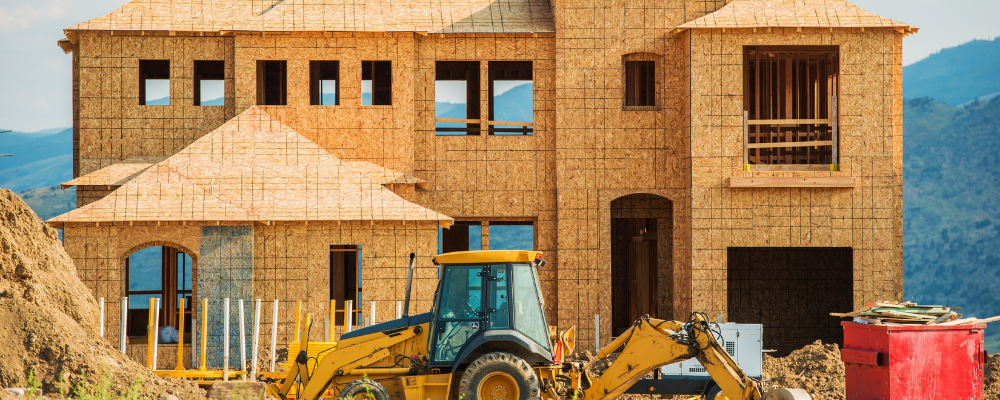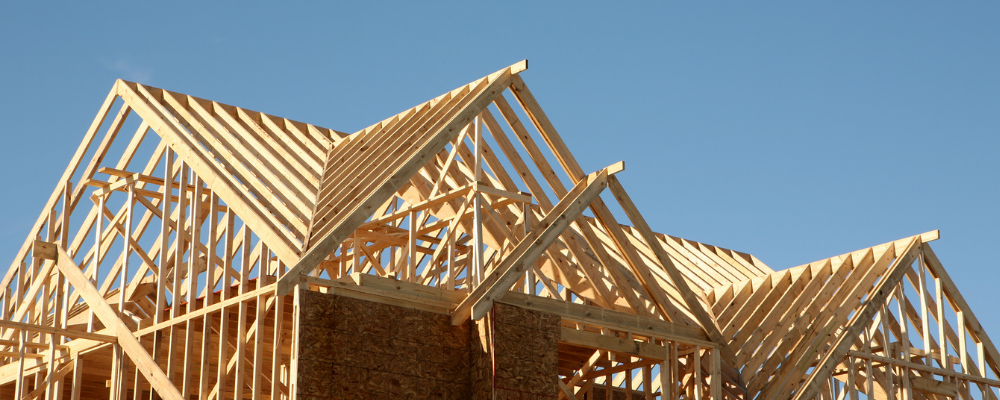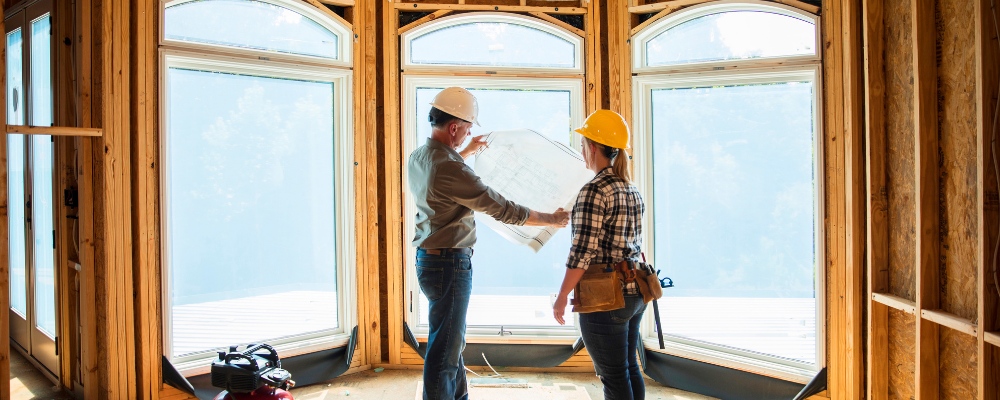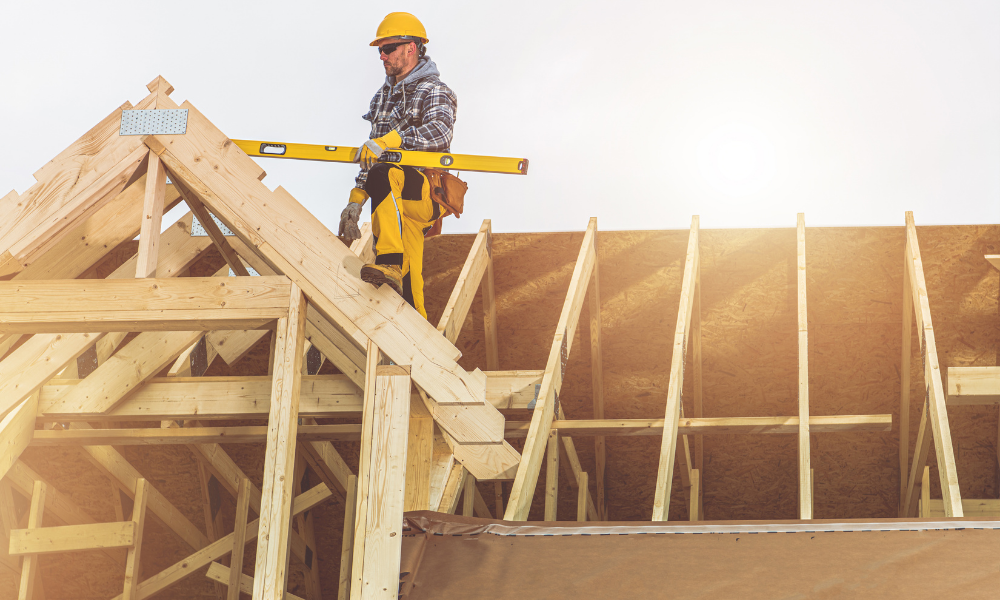A quick summary
Construction loans allow borrowers to build a home from the ground up on a piece of raw land, by providing the funds for the project and potentially the lot too. There are a variety of loans for different purposes and these range from loans that only cover the construction of the building, to loans that become permanent mortgages once the house is built. So, how does a construction loan work?
Jump To:
Construction loans can be a great solution for home building and/or renovation, that allows people to finance their real estate goals. Whether it be building your dream home or constructing a property for investment purposes, construction loans are a solution for a variety of real estate objectives. A construction loan is short-term loan with a higher interest rate that is considered specialty financing because it’s quite different to a traditional mortgage and is aimed at financing the building or renovation of a house. Now we’ll take a closer look at how construction loans work and how to get one.
How does a construction loan work?

Construction loans cover the cost of building a house from the ground up on raw land. There are various types of construction loans and what sets these apart from traditional loans is that these are typically paid to the builder in instalments as the project gets completed. A benefit to construction loans is that with various options to choose from, you’re likely to find one that suits your specific needs. Here’s how they work:
Step 1: Crunch the numbers
The application process starts with a review of your debts, assets and income, so make sure that you’ve got your paperwork ready for the lender ahead of time. They will look at your current financial situation with the view of you being able to pay back the loan. The house is the collateral in this situation, which means that if you defaulted on any payments, the lender will be able to seize your house.
Qualifying for a construction loan usually involves having a credit rating of 650 and making a down payment of 20%, sometimes up to 25%. Which means that these loans usually have higher qualification criteria than traditional loans.
Step 2: Pick a builder
Choosing the right contractor is one of the most important decisions to make when it comes to a construction loan, because lenders want to make sure that you have hired a licensed general contractor to manage the project. Construction loan lenders place a large importance on the contractor as they will be receiving the funds, not the borrower.
Lenders will also usually need to review the budget and approve the contract between you and the general contractor before the project can begin. Lenders will also need to evaluate the contractor’s company financials as part of the loan approval process.
Step 3: Firm up the timeline
The final step for a construction loan application is to provide lenders with a timeline of your project. This includes an outline of phases of the project in detail and when each phase will be happening. Your general contractor will be instrumental here, and this will serve as a blueprint for your draw schedule, which we’ll outline below. You’ll also need to provide architectural drawings, detailed floor plans, a breakdown of building materials and a total budget amount.
Step 4: Draw schedule begins
Construction loans are paid out in stages instead of a lump sum and these stages are called draws. So, once you’re approved for a loan you will be put into a draw schedule based on the timeline of your project. A 20% down payment is often required, so be prepared for this. The draw schedule is based around milestones, and once a milestone such as laying the foundations has been completed, the next draw phase can be entered.
Before each draw phase is paid out, an inspection will usually take place and an inspection report is put together, which will indicate how much money is to be paid out to the builder. During this time, you’ll be required the pay the interest on the loan. Construction loan interest rates fluctuate along with prime interest rates and are usually higher than traditional mortgage rates.
Step 5: Project completion
You won’t need to pay back the capital of the loan until the construction is complete. Depending on the type of loan, you may be able to convert it into a mortgage once the construction is complete, otherwise the loan will need to be repaid in full within a certain period.
Types of construction loans

One of the advantages of construction loans is that there are various types of construction loans to suit different needs, so you’re bound to find one that fits with you.
1. Construction-only loan
A construction-only loan covers the cost of the building of the house and once this has been completed, a borrower will need to repay the loan in full, usually within a year. If the borrower cannot pay the loan back in entirety, they’ll typically take out a mortgage for this. The borrower is only required to pay the interest on loan while construction is still underway. Funds are paid out as the project goes, according to each milestone.
Construction-only loans are best for borrowers who have a solid financial situation that is unlikely to change during the construction process as the principal loan amount will be due once the project is complete. If a borrower needs a mortgage anyway, this method can work out more expensive because it will mean paying two sets of transactions fees and loan costs.
2. Renovation loan
Home renovation loans are a good option for people who are looking to renovate or improve an existing house, rather than build one from the ground up. Based on how much you’d be spending on the project, there are different types of renovation loans available. You should also make sure that you know what renovations increase home value the most, before you choose which renovations to do.
The Federal Housing Administration (FHA) has a renovation loan called FHA 203(k), which allows borrowers to both purchase a home and renovate it. Fanny Mae and Freddy Mac also offer renovation loans. Other options include Home Equity Loans or Home Equity Lines of Credit, which can be useful to cover renovations in a flexible way using your current home equity.
3. Owner-builder loan
Typically, with construction projects a borrower will hire a general contractor, however if the borrower is acting as their own contractor then they can get a loan directly with the bank in the form of an owner-builder loan. These loans will require a demonstration of your experience, education and licensing as a contractor. These loans usually require the borrower to be a licensed builder by trade.
4. Construction-to-permanent loan
These loans are structured so that you can borrow the funds to cover the construction of a house. After this you can move into the house, and the loan then converts into a permanent mortgage. The advantage of this loan is that there are only one set of closing costs associated with it, which saves money.
Once the loan converts from a construction loan to a permanent mortgage, the borrower will make payments that cover the principal amount and interest. Borrowers have the option to use a fixed interest rate or adjustable rate. There are some construction-to-permanent loans that have less stringent approval requirements which can be good for new borrowers.
5. End loan
An end loan is the mortgage that a homeowner has to pay off once the construction of the house is completed. So, a construction loan is the loan being used in the building phase, thereafter a borrower has a mortgage that has to be paid off. It’s similar to the construction-to-permanent loan setup, however an end loan is a separate mortgage that a homeowner takes out, and it’s not linked to their construction loan.
How to get a construction loan

Not all lenders offer construction loans, so you can consult your local banks or credit unions if you’d like to go the conventional route. Alternatively, you can consider other lenders by looking online.
There are hard money lenders such as New Silver that offer Ground Up construction loans. This particular loan from New Silver offers loan terms of up to 18 months, with a maximum amount of $5,000,000. It also offers instant proof of funds letters, approval in 48 hours and funding in as little as 5 days.
When do you start paying on a construction loan?
During the construction phase of the loan you’re only required to pay back the interest. At the end of the project, once the house has been built, you’ll be required to begin paying back the principal part of the loan. It can take 6 to 24 months before you’ll need to make full payments towards the loan.
How long are construction loans?
Construction loans are short-terms loans which usually run for 12 to 18 months. The funds are used for the material and labor needed to build a house and sometimes to purchase the lot on which the house will be built as well. These loans are shorter because they only cover the building process.

What does a construction loan cover?
Construction loans usually cover the following:
- The cost of the raw land
- Any building materials
- All permits
- The contractor’s labor
Permanent fixtures like appliances can be included in a construction loan, but other home furnishings are not usually part of the loan. The design phase of the project is not covered, so you’ll need to pay for this yourself.
Closing thoughts
A construction loan requires a low debt-to-income ratio so, to make that you qualify for this type of loan you should have a good credit score and be able to prove that you can repay the loan. Lenders want to know that you have a plan in place, so it’s also a good idea to choose your general contractor ahead of time and formulate a detailed plan. This is a riskier loan, so lenders will want to make sure that you can pay back the loan, or that the property can be used as sufficient collateral for the loan. All in all, construction loans can be a good solution for those who’d like build a home from the ground up and need the funds to do so.



